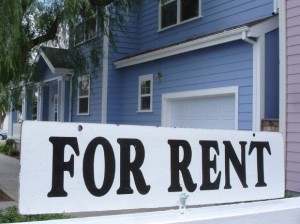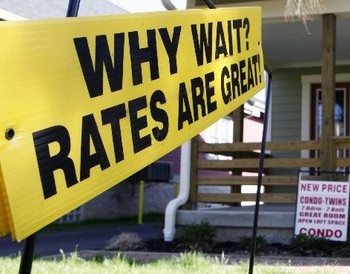 Now may be a great time to look at purchasing a rental property.
Now may be a great time to look at purchasing a rental property.
With interest rates near all-time lows, improving supply and demand dynamics and low real estate prices, the attractiveness of an investment property looks better than it has in many years. In addition, the prospects of higher long-term inflation make real estate look even better since it tends to hold up well during periods of rising prices.
According to Thomas Hogan, president of Century 21 Action Plus Realty, “The current real estate market offers a great environment for investors to purchase residential real estate, particularly single-family homes and condominiums. Current rental demand is very strong, and rents are going up.”
While there are many opportunities in today’s market, it is important for prospective investors to have an overall game plan before getting started.
The first step in the process is to determine if purchasing a rental property is financially feasible. Tighter lending standards are a by-product of the financial crisis and many institutions require a larger down payment on an investment property than they do for a personal residence — often as much as 20 to 25 percent of the purchase price.
While many banks charge higher rates of interest to finance an investment property, it is possible to find institutions that charge the same rate regardless of the property type. Do your homework and contact multiple lenders to achieve the lowest rate.
Cash reserves are a must when it comes to purchasing an investment property. This helps to ensure that you have sufficient funds to handle prolonged periods of vacancy, unexpected maintenance costs, or even tenant damage that will inevitably arise over time. Consider maintaining six to nine months of additional cash for expenses associated with the rental property.
Once you have identified that you have the financial resources and can be approved for financing, the next step is to identify a solid investment.
Choosing a rental property location can be complicated. Generally, it is tough to go wrong with high population areas where people want to live. Good schools and low crime rates are a must if you plan on renting to families with children and proximity to public transportation, shopping malls and other conveniences should also be considered as they can improve rental income.
Like all other investments, it comes down to demand and more attractive areas will command higher rents. Ideally you want to purchase a home that both renters and buyers would be interested in, in the event that you plan on selling one day.
Location is often cited as the most important aspect of property selection. While this is true, the decision of whether to invest in a rental property really comes down to cash flow. Will the rental income cover the costs associated with running the property while still leaving a profit? If not, move on to the next opportunity — breaking even is simply not good enough.
While positive cash flow does not guarantee your investment will appreciate, it may help insulate you from losses.
Determining the rental property cash flow requires careful and conservative estimations of income and various expenses. Speak to a real estate professional in your area to obtain rental comparables so that you can see what similar homes are renting for.
Also remember to carefully review anticipated expenses. From mortgage payments and taxes to insurance and maintenance, underestimating your expenses can come back to bite you. Consider visiting Yahoo! Homes to complete an online investment property calculator.
From mortgage interest expense and insurance to utilities and depreciation, there are many tax deductions associated with owning a rental property. These tax benefits help to reduce the taxable portion of rental income you are receiving. However, things can get more complicated if you end up taking a tax loss and it is critical for investors to understand the passive activity loss rules. Consider visiting www.IRS.gov to review Publication 925, Passive Activity and At-Risk Rules more information.
Using the rent charged to tenants to pay off a property’s mortgage and build equity over time can be a great financial move. However, it does not come without its risks. As we have all learned, property values can go down, so be selective with where and when you buy.
Next, it is critical to have a strong vetting process to help improve the chances of getting a good tenant who is capable of paying on time. Background and credit checks along with a detailed rental application can help you to obtain the information necessary to choose the right tenant.
Finally, make sure that you maintain appropriate liability coverage which may also include umbrella coverage.
Now may be a great time to get into the rental market but be sure to do your homework first. Since everyone’s situation is unique, consider speaking to your tax, legal and financial adviser to determine the best approach for you.
Kurt J. Rossi, MBA, is a Certified Financial Planner Practitioner and wealth advisor. He can be reached for questions at (732) 280-7550 and kurt.rossi@Independentwm.com. LPL Financial Member FINRA/SIPC.








